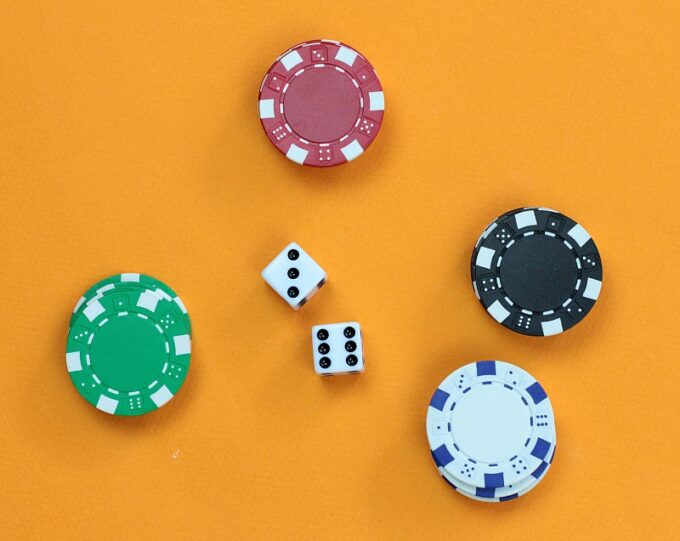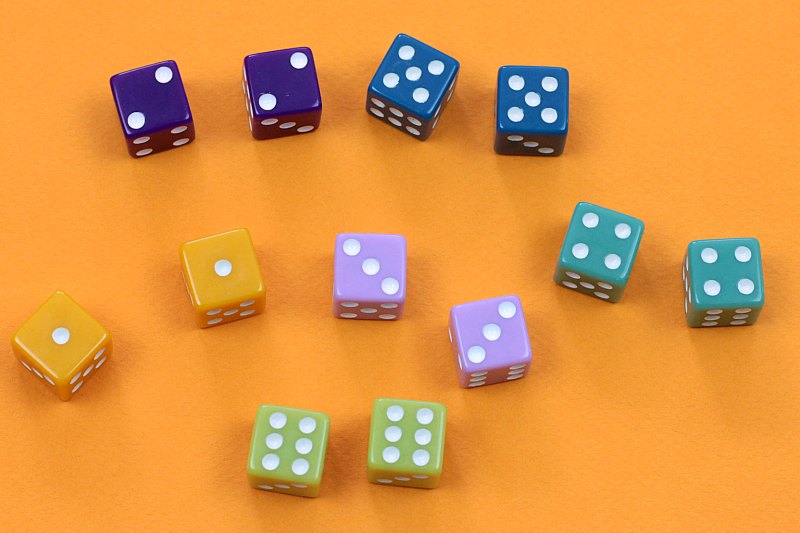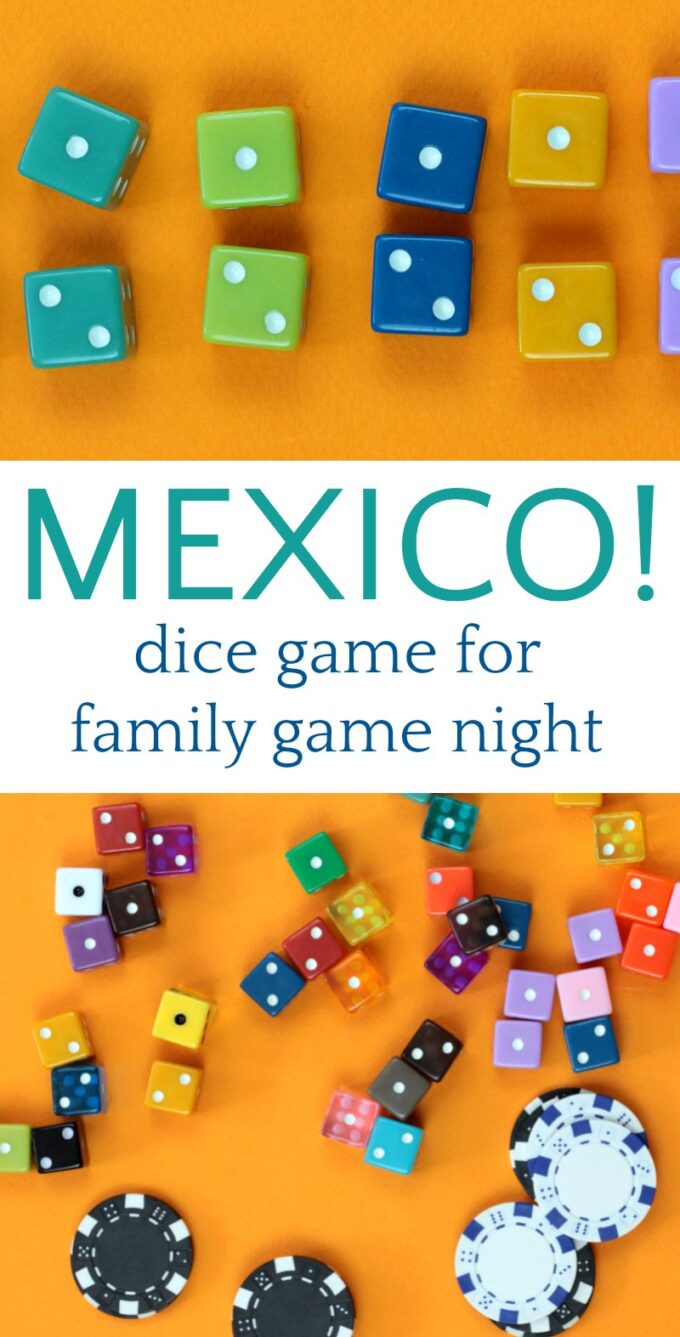I don't know what this dice game has to do with Mexico, but "Mexico" is what it's called! I've seen it called "Mexican Dice Game" and referred to as either a gambling or a drinking game, often played in bars. But hey, there's no reason to steer clear of our family-friendly version of the Mexico dice game!

In fact, Mexico dice quickly made it into to our family's repertoire of the best easy dice games!
The Mexico dice game rules are just as easy to learn as those for Pig dice, Chicago dice, Going to Boston (hey, place names seems to be a theme!) or any other of the games we have featured here. So grab some dice, your kids, aunts, uncles, anyone else and play a game that has nothing what so ever to do with anything south of the border.
I should mention that I came across several variations of this game and you may indeed play by slightly different rules. This is how we play.
(Note: this post contains affiliate links which may earn commission.)
How to Play Mexico Dice Game
What you need:
- 2 dice (we love our fancy colors!)
- 2 or more players, at least 3 players is best
- Chips or tokens. We love to play with these casino chips because they lend a certain gravitas to our game play. However, coins will also suffice!

Objective: to be the last person left with any chips!
Mexico Dice Game Rules
- Determine who goes first
Everyone roles one die. The highest roll is the first person to play. Play will continue clockwise.
- Distribute the chips
Everyone gets a predetermined number of chips. We like to play with 5 chips.
- Player one begins
The first player rolls both dice. The objective is to roll a high number.
The first player is allowed 3 attempts to achieve a good score. Only the final roll counts. So if he preferred the 2nd roll to the 3rd, too bad. The 3rd roll must be his score. However, he can choose to stop rolling after only one or two throws of the dice.
If the first player throws the dice fewer than three times, all of the subsequent players for that round can only throw the dice that many times as well.
The score is not the sum of the dice, but rather the two-digit number represented by the face value of the dice, in which the larger number is the first digit. For example, a roll of a 2 and 3 would be a score of 32.
However, all double rolls (1-1, 2-2, 3-3, etc.) score higher than any mixed roll. So if the highest mixed roll is 6-5, then a 1-1 will still beat it. But a 2-2 beats 1-1, a 3-3 beats 2-2, and so on up the food chain.
However, the best roll is actually a 2-1. A 2-1 is known as a "Mexico." (Why? Who knows.) This is the highest scoring roll and beats any other roll. And since doubles beat anything that isn't a 2-1, that means the lowest roll is 3-1. - Complete a round
After the first player has thrown the dice, marked his score, he passes the dice to the next player who continues the game. He may roll up to as many times as the first player, but is not obligated. For example, if he rolls a 2-1 on his first roll, he won't want to roll again!
Note: traditionally, a roll of 2-1 during a round means the stakes are doubled. In this case the loser would contribute two chips instead of one. However, we never did that.
After everyone has had one turn, the player with the lowest score adds a chip to the pot (the center of the table). - Play additional rounds
The losing player begins the next round.
Play continues as above; continue rounds until one one person has any chips left. That player is the winner.

Tips
Many dice games are pure luck, but Mexico takes a little bit of strategy. Will you roll all three times or accept an earlier roll?
As I said at the start, you can find additional rules to Mexico dice game play. However, we like to keep it simple. With all of the games I share, I encourage families to experiment with new rules, discussing how changing one aspect of the game effects others. Have fun with it!
More dice games:






Ariane Schmidt says
A thousand thanks for all your resources, you are an amazing curator! Just FYI, in the first line of info below the Mexico game photo, the word "know" seems to be missing .
Erica says
Oops! Thank you!
Rita says
You didn’t really say what the score of a 1-1, 2-1, 3-1, etc would be? And what do you mean the stakes are doubled if you roll a 2-1? Thanks. Sounds like fun.
Erica says
The rolls of 1-1, 2-2, 3-3 and 2-1 don't need a numerical value. They beat any other roll (according to their hierarchy). So if I roll a 5-2 (52) but my friend rolls a 2-1 then the 2-1 wins, no score value necessary. If I roll a 1-1 and my friend rolls a 3-3, they win because 3-3 is higher up on the hierarchy than 2-2, no score value necessary. As to the second question, "a roll of 2-1 during a round means the stakes are doubled. In this case the loser would contribute two chips instead of one."
Hope this helps.
Andrew Smith says
Why 21 is the highest roll.
This game evolved from an older Viking game from around 600 AD. The knuckle bones of animals were used as dice and the one and two were painted or engraved on the narrowest sides of the knuckle bone making them the two hardest numbers to roll. Also in the Viking variation of this game the doubles are reversed in order 11 being the highest and 66 being the smallest. Other than that it's a fairly interesting game. However the Viking version involves lying deception and several other things that I'd rather not teach my kids. So we typically play more similar to the Mexican version.